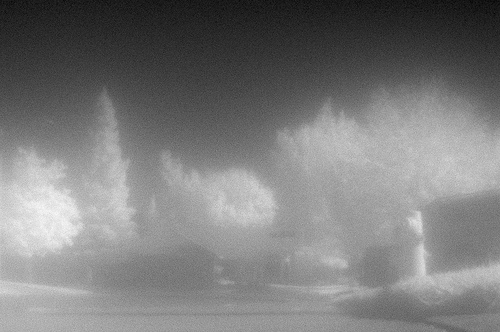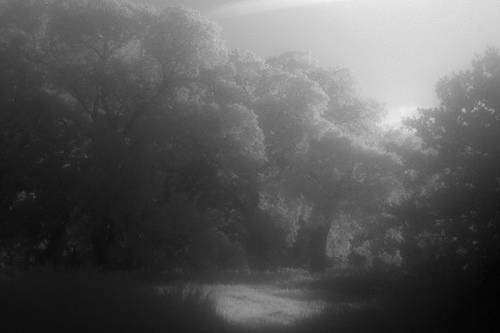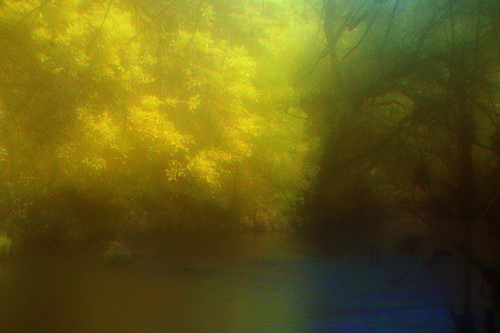
Infrared Photography
Homemade lenses are not limited to the visible light domain. Infrared photography can also be used with homemade lenses. In fact, there are properties of homemade lenses and infrared photography that complement each other very well. For example, spherical aberration from simple uncorrected lenses tends to drastically reduce contrast. This is particularly true in landscape shots in which the light from the blue sky can wash out all the detail of the image. On the other hand, landscape images taken in the infrared part of the spectrum tend to have increased contract because the foliage is brightened due to its reflectivity to IR, and the sky is darkened due to less scattering of IR light. Therefore, when landscapes are shot in IR using homemade lenses, much of the loss in contrast and blue haze from the homemade lens is eliminated by the properties of IR photography. What remains is a soft, diffuse, and rather dreamy look.
I am not an expert on infrared photography. Far from it. I am just beginning to explore this very interesting area. Therefore I will not attempt to provide any in-depth tutorial on the topic. Fortunately, there is plenty of good information available on the web. For people who have not tried it, I will only add this: Digital infrared photography is not hard at all. In most cases all it takes is the purchase of an infrared filter such as the Hoya R72 or the Tiffen 87. Note that today's DSLRs all seem to have a sharp filter designed to stop IR from reaching the sensor. But just enough IR gets through to make IR photography possible with these cameras. Note that exposure times will need to be very long. 30 second exposures are common. I don't consider this a big problem as long as you use a tripod.

